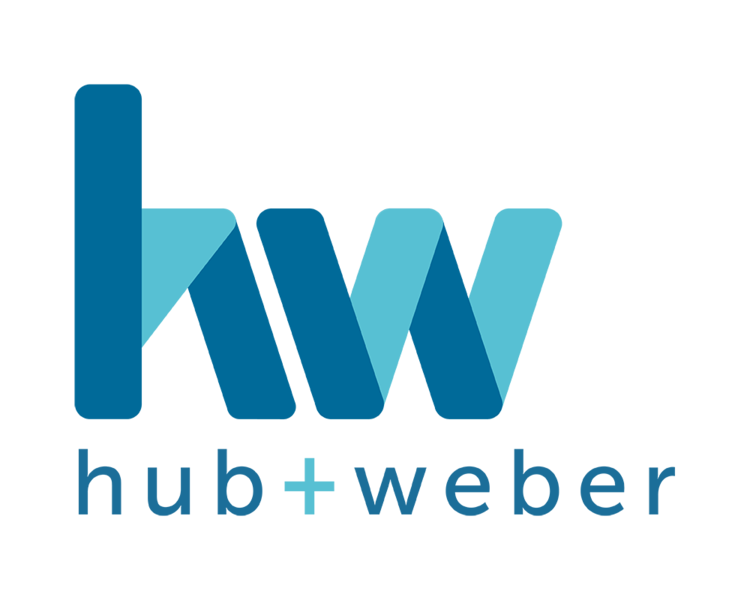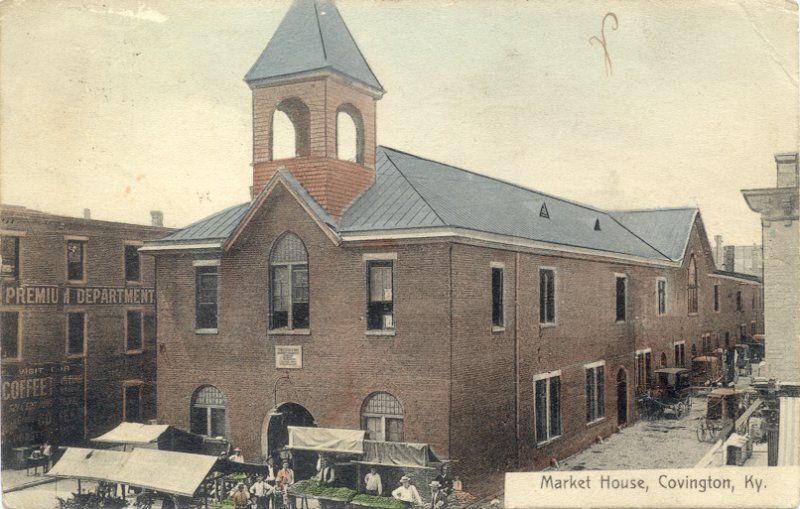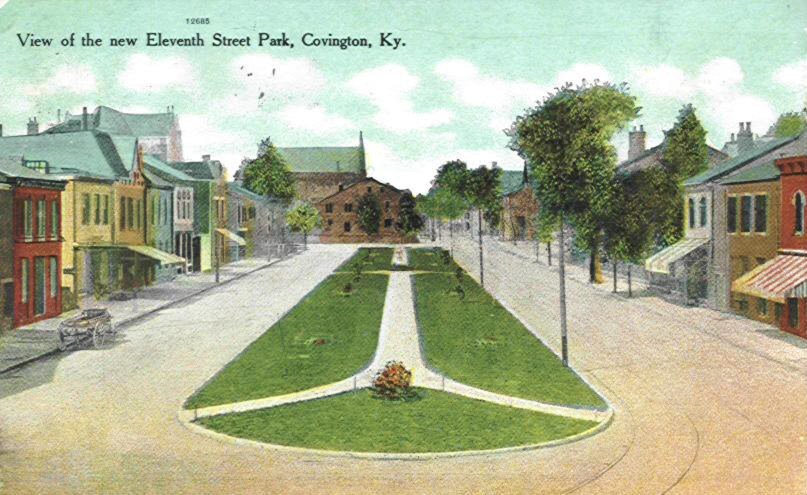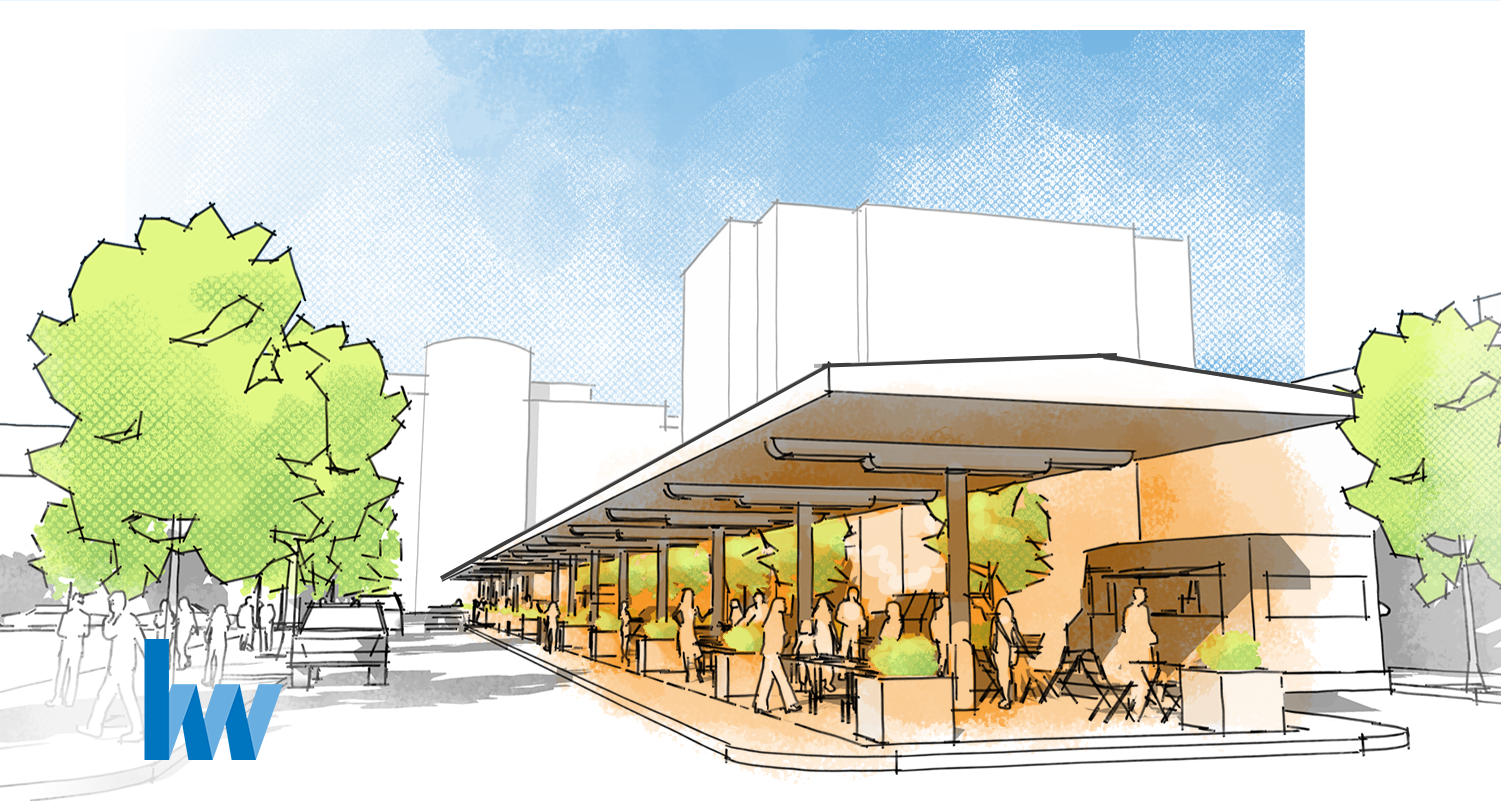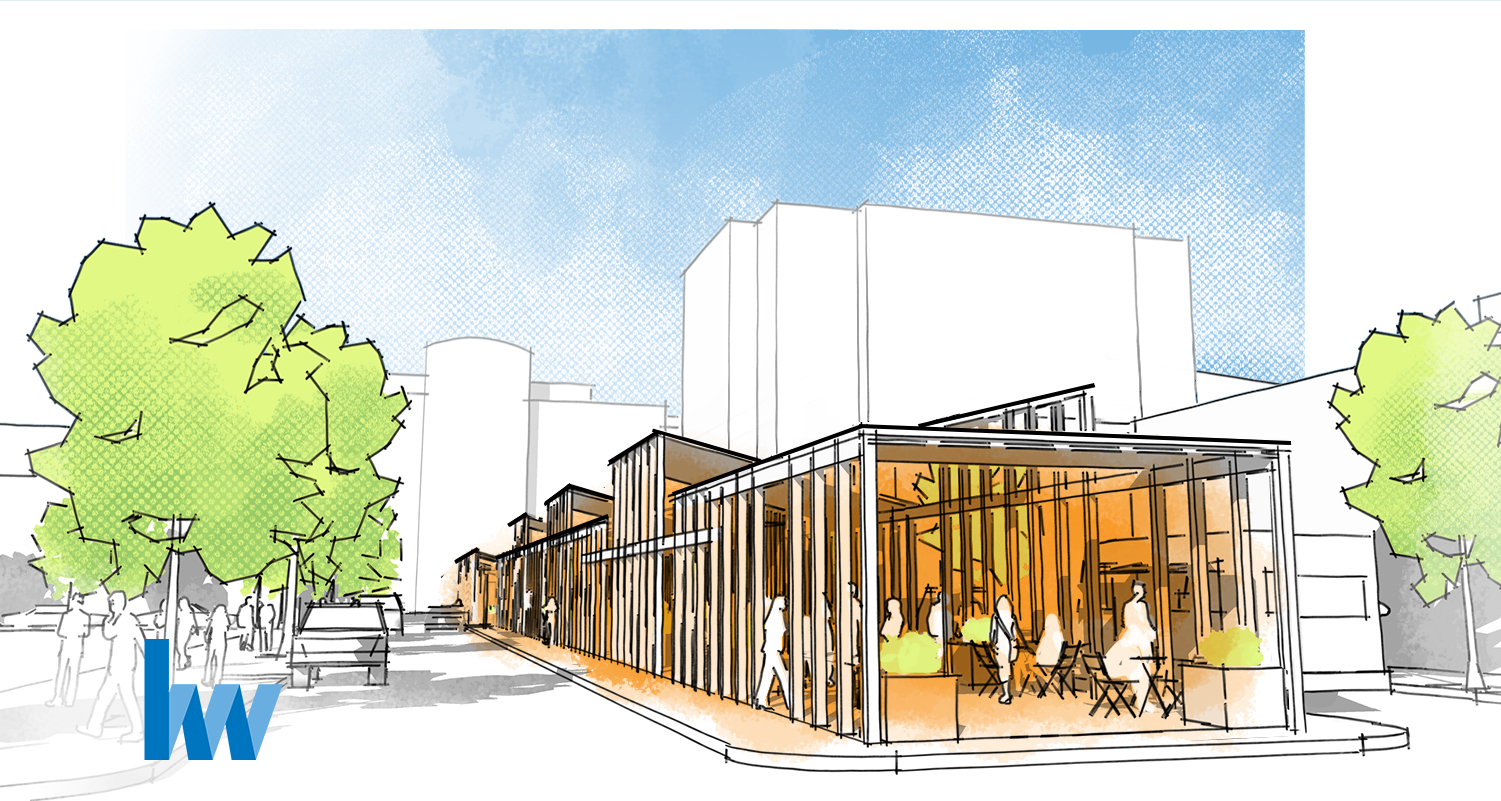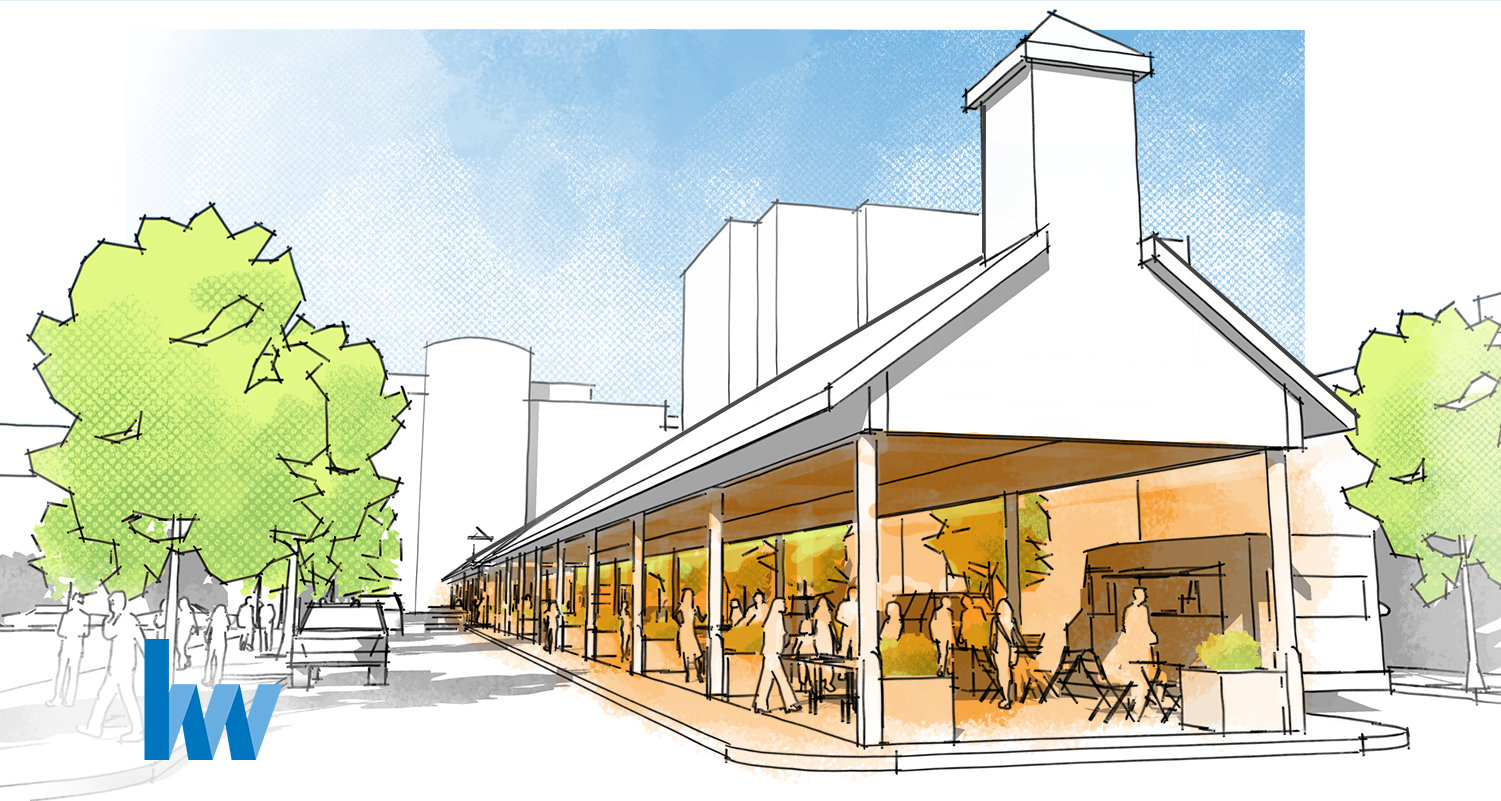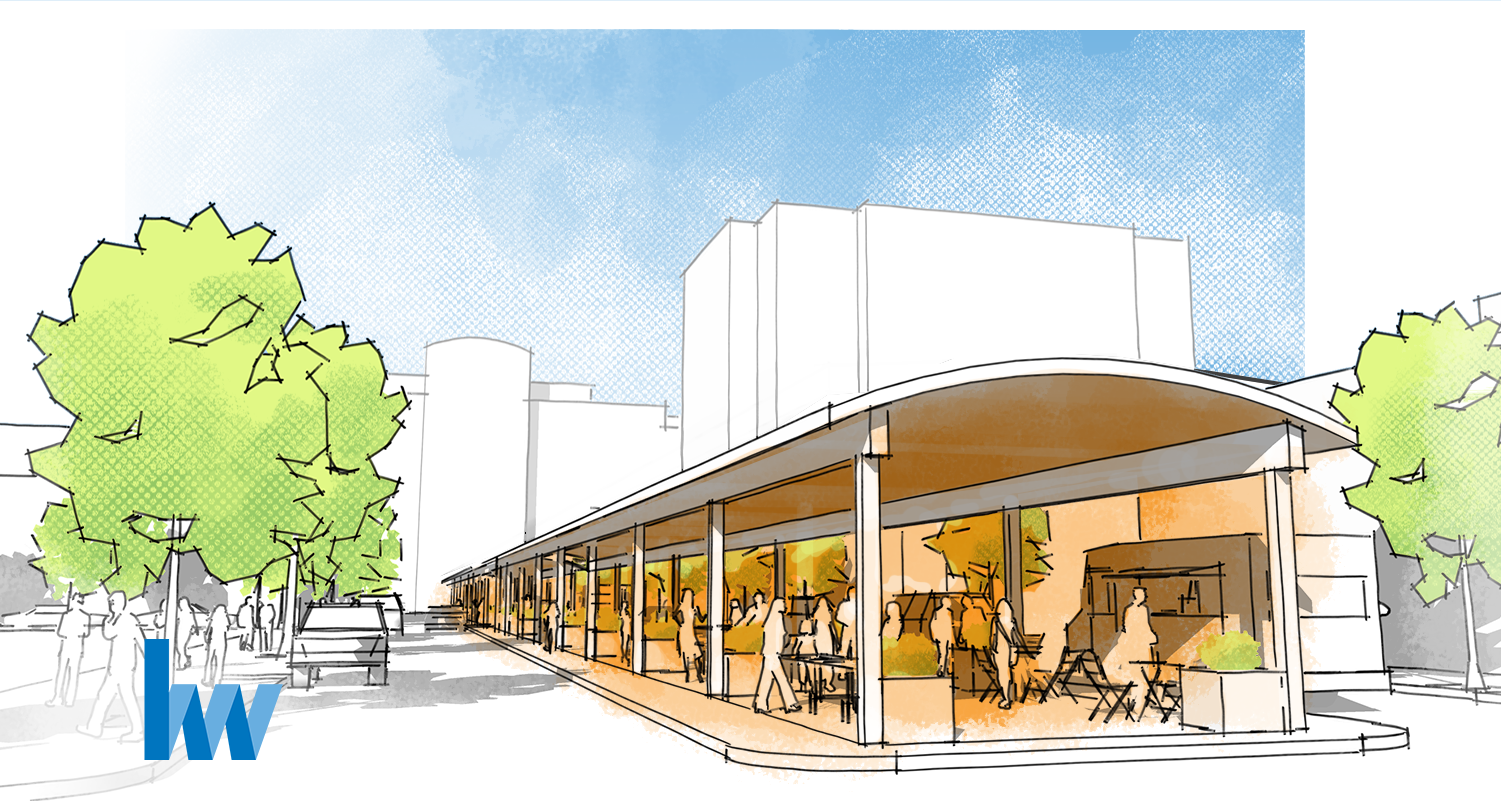The Market Houses of Covington – Past (ACT I)
A. Market Street
Covington’s 205-year history has seen a lot of change. The city has grown from a small settlement in 1815 at the confluence of the Licking and Ohio rivers into our beloved urban city. The early growth of the city was centered at this northern juncture, and by 1830 the need for a public market square was pressing. A market house was built: a simple one-story building on what used to be Market Street—now Park Place—where local producers gathered to sell meat, produce, and everyday goods to the community of Covington. In the 19th century the market house was demolished to create a wide boulevard with a park down the middle (Withers Park, according to the Kenton County Historical Society), and at the turn of the 20th century streetcar tracks from the Roebling Bridge cut through the park (as seen below). Now, despite the name Park Place, the street is completely paved, with double-wide vehicular access and parking.
(1856 Park Place Market House looking west from Greenup Street. Note that the buildings in the background are the same, and the Old Trinity Episcopal Steeple is visible in the distance at the left.)
B. 7th Street
As the city of Covington grew in the mid-1800s, the center of the city moved further south, but the need for a communal commercial hub (get it, Hub? Like Hub+Weber) remained unchanged. A second market was built on 7th Street between Madison Avenue and Washington Street before 1850, which included another one-story brick and wood market house. This market house was so successful that it was replaced with a two-story brick structure in the 1880s, which housed city offices on the second floor. The market was in use until it was demolished in the 1930s, although you can still see where it would have stood between Braxton Brewery and Klingenberg’s Hardware.
(7th Street , c. 1845, rebuilt 1889)
C. 6th Street
Just after the construction of the 7th Street hub (ha, hub again), demand prompted another market to pop up in Mainstrasse. Built in 1860 and located in the middle of the 6th Street promenade between Main and Bakewell, the market was used as an economic development tool, spurring development around it during the post-Civil War period. This market house remained in use until 1895, when it was demolished to make way for the present-day George Steinford Park. You can almost imagine the Goose Girl greeting you at the entrance.
(6th Street (Steinford) Park, c. 1895)
D. 11th Street
The fourth designated market location in Covington was located on 11th Street between Greenup and Scott Streets, on the land where B. F. Howard Park is now located. As with previous markets, the location followed Covington’s growth southward. It was built before 1859 and consisted of a simple one-story structure. Despite less foot traffic than other markets in the city, the 11th Street market outlasted many of its peers, yet was demolished in the early 20th century.
(A view of the old B.F. Howard Park on 11th St. c. 1905)
E. 7th Street (Again)
The last market house to exist in Covington (as yet) replaced the original 7th Street public market. The city couldn’t function without a central market space, so an old garage on Scott St. (now the Northern Kentucky Emergency Cold Shelter) was converted to become the city’s public market. It closed after World War II when suburban convenience and supermarkets became the fashion. Its closure marked the close of Act One of our public market history, and the city has not had a structure designated to a public food market since.
There are many reasons why this variety of urban commerce disappeared. Likely, it is due to the Industrial Revolution and advances in mass agriculture, transportation, and technology—more specifically, refrigeration. In the early 1900s, refrigerators opened the door (Ha! Man, we are full of them today!) for supermarkets, transporting foodstuffs from mass agriculture to suburban populations. People started prioritizing convenience and cost over locally produced goods, forcing farmers to adapt to the model or find alternative income.
With all trends there is a movement of resistance, where people seek the benefits that the trend ignores in the name of convenience or cost. Things like community, connectivity, interaction, sustainability, quality. We see it now in the rise of urban populations and property values, the revolt against social media. Now, people are coming back to live in the core and the need for a public market is slowly growing. The community, walkability, and ability to support local businesses is a desirable amenity to many of the new/returning residents.
Market Houses in Covington – The Future (ACT II)
Since 2005 (now under the management of our friends at Renaissance Covington), a new public marketplace has emerged in the downtown core. The Covington Farmers Market has successfully operated out of temporary tents and various indoor locations for years, presently on 3rd Street between Greenup and Scott—a stone’s throw away from the original Market Square!
The upcoming development of the old Kenton County building and the commandeering of streets for outdoor dining (because you know why) are creating a good argument for returning the surrounding streets to their roots, allocating more of the public realm to pedestrian commercial activity.
The need for an outdoor market is becoming more and more of a necessity thanks to the ‘Rona. During these unprec**** times, people have begun embracing outdoor markets as a place where they feel safe enough to gather and see other people as well as getting their produce. The outdoor space feels “safer” than the cramped Kroger aisles and the location increases accessibility.
(Proposed site plan)
We believe that a more robust, year-round Farmers Market could be easily accommodated here, at the intersections of Court St and Park Place. Especially if the original esplanade were restored, the year-round market could serve adjacent businesses with fresh produce and host community events. This would restore the original purpose of the street to a place for the interchange of the community -- a central location for people to gather and sell local produce and goods, to celebrate the small businesses and producers that feed our city.
Check out our quick sketches to see what could be in this space. Let us know which one you like best, or what style you’d like to see!
We are hopeful and excited to see what happens with the space. Stay tuned for more developments and ideas!
Sources:
Kenton County Historical Society Bulletin, July-August 2010
National Register of Historic Places Historic District Nomination Form – Covington Downtown Commercial Historic District (Boundary Increase) 1995
Sanborn Fire Insurance Maps (1886-1956)
